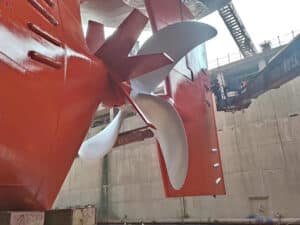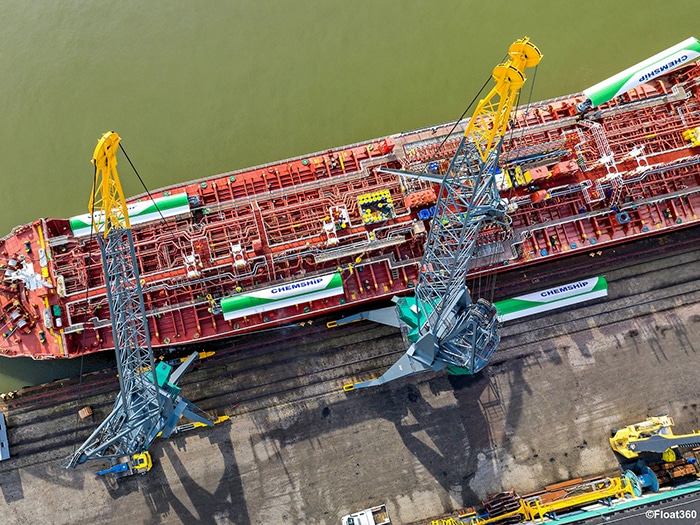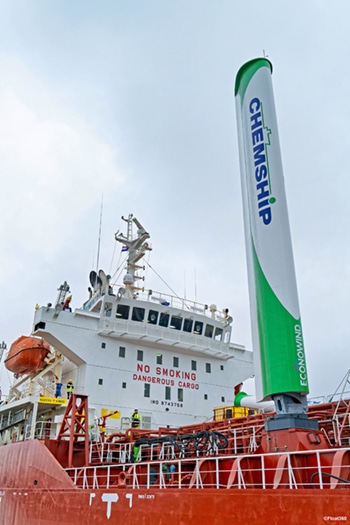
VIDEO: Chemship retrofit is a wind-assisted propulsion world first
Written by Nick Blenkey
The VentoFoil sails are a good fit for the existing configuration of Chemship’s tankers.
Chemship’s 2015-built 16,111 dwt Chemical Challenger has become the world’s first chemical tanker to be retrofitted with wind-assisted propulsion. This week, four 16-meter-high aluminum Econowind Ventofoils wing sails were installed on board the 134-meter long vessel, which serves Netherlands-headquartered Chemship’s transatlantic route between the East Coast of the United States and the Mediterranean.

The VentoFoils fitted to the Chemical Challenger have a direct wind surface of 180 square meters but use vacuum technology designed to quintuple the force of the wind, creating a gross wind surface of 900 square meters. Chemship expects to achieve an average CO2 reduction of 10% with the sails.
Chemship has a relatively young fleet with an average ship age of seven years. Its CEO, Niels Grotz sees wind-assisted propulsion as a return by shipping to its roots.
“As an avid sailor, I know the power of the wind,” says Grotz. “We will now harness this sustainable and free energy source on MT Chemical Challenger. Despite the fact that shipping already has the lowest carbon footprint of all transport modes, we can use wind to make our existing fleet even more sustainable. With the VentoFoils, we will use less fuel and thus reduce CO2 emissions. For this vessel, we anticipate an annual CO2 reduction of 850 tonnes. This is equivalent to the yearly CO2 emissions of over 500 passenger cars.”
ETS CO2 PRICING
Since January 1, when the European Emissions Trading System (ETS) was extended to cover the shipping industry, shipowners have been paying for the emissions associated with transporting goods by sea to and from European ports, providing a further incentive to fit wind assistance,
“Our customers increasingly demand CO2 reports,” says Grotz. “The better our ships perform, the higher the rating from our customers. Fewer emissions are not only beneficial for the environment, you will also notice it directly in your wallet.”
The Ventofoil sails are a good fit for the existing configuration of Chemship’s tankers.
“Chemship was looking for a solution that would not interfere with normal operations,” says Chemships operations director Michiel Marelis. “These wing sails were easy to install without adding reinforcements to the ship. They are lightweight, have a small deck ‘footprint’ and do not obstruct the crew’s line of sight. At the push of a button, they can fold or set the sails as needed. Above wind force seven, the sails fold automatically, which is much safer. Now it is learning by doing. With positive results, we will also equip the next vessel with VentoFoils.”
SUSTAINABILITY MADE VISIBLE
“The beauty of these turbo sails is that you can show them to customers,” says Marelis. “They immediately capture everyone’s imagination. We hope this will inspire others to choose wind assisted propulsion too. We also focus on less visible aspects such as improved lubricating oils and a coating that enables the ship to glide through the water more efficiently. Cumulatively, this leads to fuel savings of over 15%. This all goes hand in hand with a CO2 reduction. Chemship remains committed to making the fleet more sustainable.”




